Search
Items tagged with: galaxiesstarsblackholes

Webb Maps Full Picture of How Phoenix Galaxy Cluster Forms Stars
Discovery proves decades-old theory of galaxy feeding cycle.NASA Webb Mission Team (NASA Science)

NASA Telescopes Deliver Stellar Bouquet in Time for Valentine's Day - NASA
A bouquet of thousands of stars in bloom has arrived. This composite image contains the deepest X-ray image ever made of the spectacular star forming regionNASA

Black Holes Can Cook for Themselves, Chandra Study Shows - NASA
Astronomers have taken a crucial step in showing that the most massive black holes in the universe can create their own meals. Data from NASA’s Chandra X-rayNASA

Black Holes Can Cook for Themselves, Chandra Study Shows - NASA
Astronomers have taken a crucial step in showing that the most massive black holes in the universe can create their own meals. Data from NASA’s Chandra X-rayNASA

Newfound Galaxy Class May Indicate Early Black Hole Growth, Webb Finds - NASA Science
In December 2022, less than six months after commencing science operations, NASA’s James Webb Space Telescope revealed something never seen before: numerous red objects that appear small on the sky, which scientists soon called “little red dots” (LRD…science.nasa.gov

New Simulated Universe Previews Panoramas From NASA’s Roman Telescope - NASA
Astronomers have released a set of more than a million simulated images showcasing the cosmos as NASA’s upcoming Nancy Grace Roman Space Telescope will seeAshley Balzer (NASA)

Astronomers Catch Unprecedented Features at Brink of Active Black Hole - NASA Science
International teams of astronomers monitoring a supermassive black hole in the heart of a distant galaxy have detected features never seen before using data from NASA missions and other facilities.science.nasa.gov

How Many Black Holes Are Hiding? NASA Study Homes in on Answer - NASA
An effort to find some of the biggest, most active black holes in the universe provides a better estimate for the ratio of hidden to unhidden behemoths.Anthony Greicius (NASA)

NASA Finds ‘Sideways’ Black Hole Using Legacy Data, New Techniques - NASA
NASA researchers have discovered a perplexing case of a black hole that appears to be “tipped over,” rotating in an unexpected direction relative to theAbby Tabor (NASA)

NASA Missions Spot Cosmic 'Wreath' Displaying Stellar Circle of Life - NASA
Since antiquity, wreaths have symbolized the cycle of life, death, and rebirth. It is fitting then that one of the best places for astronomers to learn more about the stellar lifecycle resembles a giant holiday wreath itself.NASA
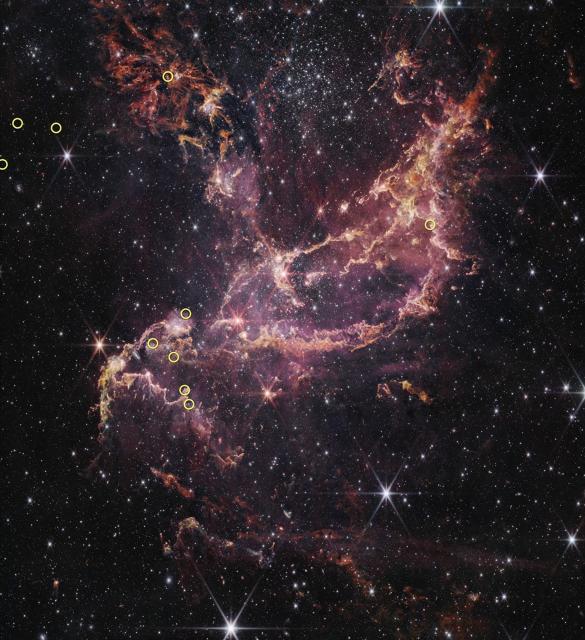
NASA’s Webb Finds Planet-Forming Disks Lived Longer in Early Universe - NASA Science
NASA’s James Webb Space Telescope just solved a conundrum by proving a controversial finding made with the agency’s Hubble Space Telescope more than 20 years ago.science.nasa.gov
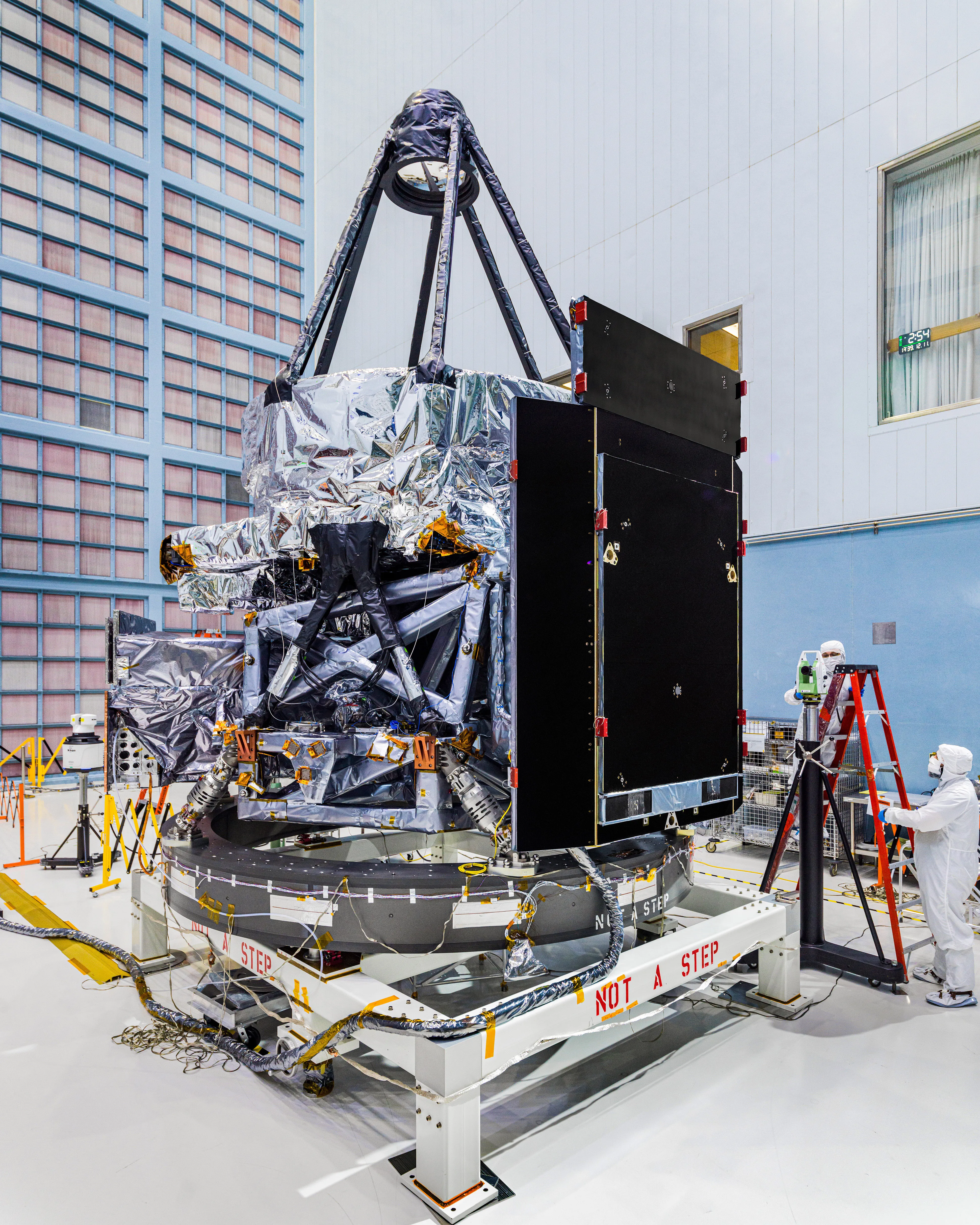
NASA Successfully Integrates Roman Mission’s Telescope, Instruments - NASA
NASA’s Nancy Grace Roman Space Telescope team has successfully integrated the mission’s telescope and two instruments onto the instrument carrier, marking theAshley Balzer (NASA)

Black Hole Jet Stumbles Into Something in the Dark - NASA
Even matter ejected by black holes can run into objects in the dark. Using NASA’s Chandra X-ray Observatory, astronomers have found an unusual mark from aNASA

NASA’s Swift Studies Gas-Churning Monster Black Holes - NASA Science
e Scientists using observations from NASA’s Neil Gehrels Swift Observatory have discovered, for the first time, the signal from a pair of monster black holes disrupting a cloud of gas in the center of a galaxy.science.nasa.gov
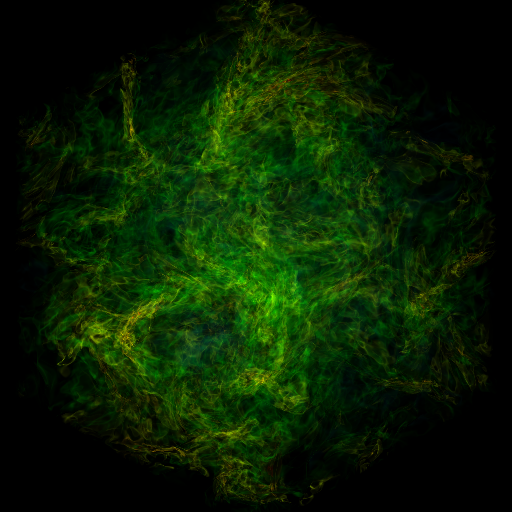
Buckle Up: NASA-Funded Study Explores Turbulence in Molecular Clouds - NASA Science
On an airplane, motions of the air on both small and large scales contribute to turbulence, which may result in a bumpy flight. Turbulence on a much larger scale is important to how stars form in giant molecular clouds that permeate the Milky Way.science.nasa.gov
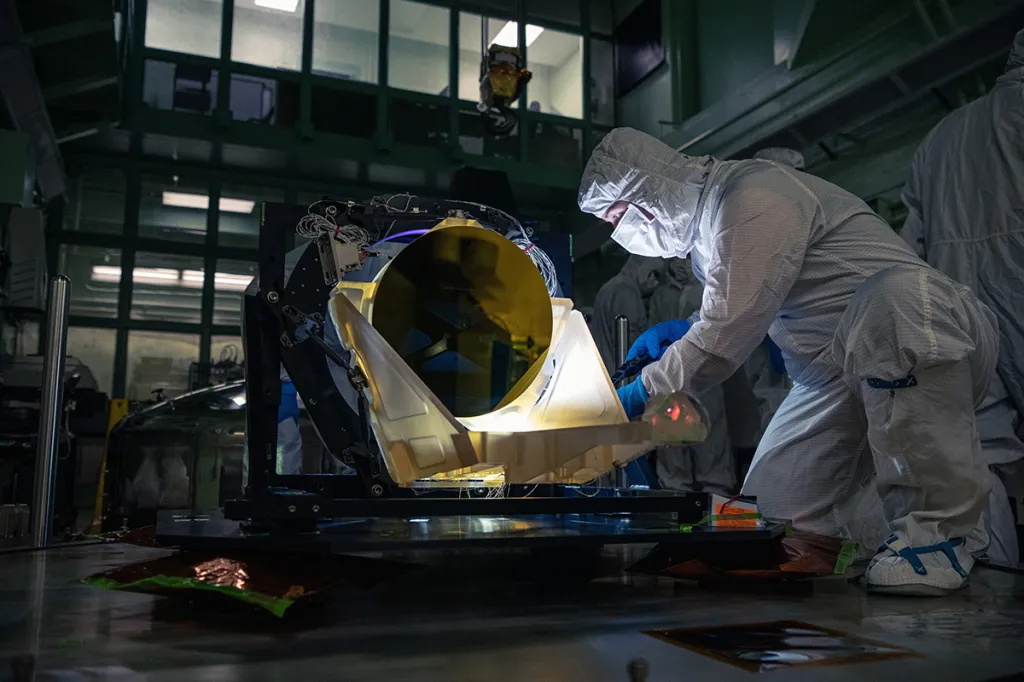
NASA Reveals Prototype Telescope for Gravitational Wave Observatory - NASA Science
NASA has revealed the first look at a full-scale prototype for six telescopes that will enable, in the next decade, the space-based detection of gravitational waves — ripples in space-time caused by merging black holes and other cosmic sources.science.nasa.gov

Black Hole Destroys Star, Goes After Another, NASA Missions Find - NASA
NASA’s Chandra X-ray Observatory and other telescopes have identified a supermassive black hole that has torn apart one star and is now using that stellarNASA

NASA’s TESS Spots Record-Breaking Stellar Triplets - NASA
Professional and amateur astronomers teamed up with artificial intelligence to find an unmatched stellar trio called TIC 290061484, thanks to cosmic “strobeAshley Balzer (NASA)
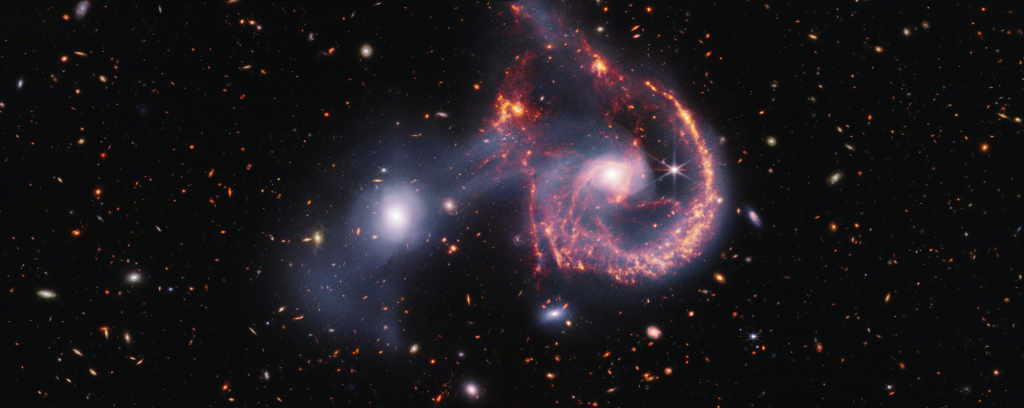
NASA’s Webb Provides Another Look Into Galactic Collisions - NASA Science
Smile for the camera! An interaction between an elliptical galaxy and a spiral galaxy, collectively known as Arp 107, seems to have given the spiral a happier outlook thanks to the two bright “eyes” and the wide semicircular “smile.science.nasa.gov
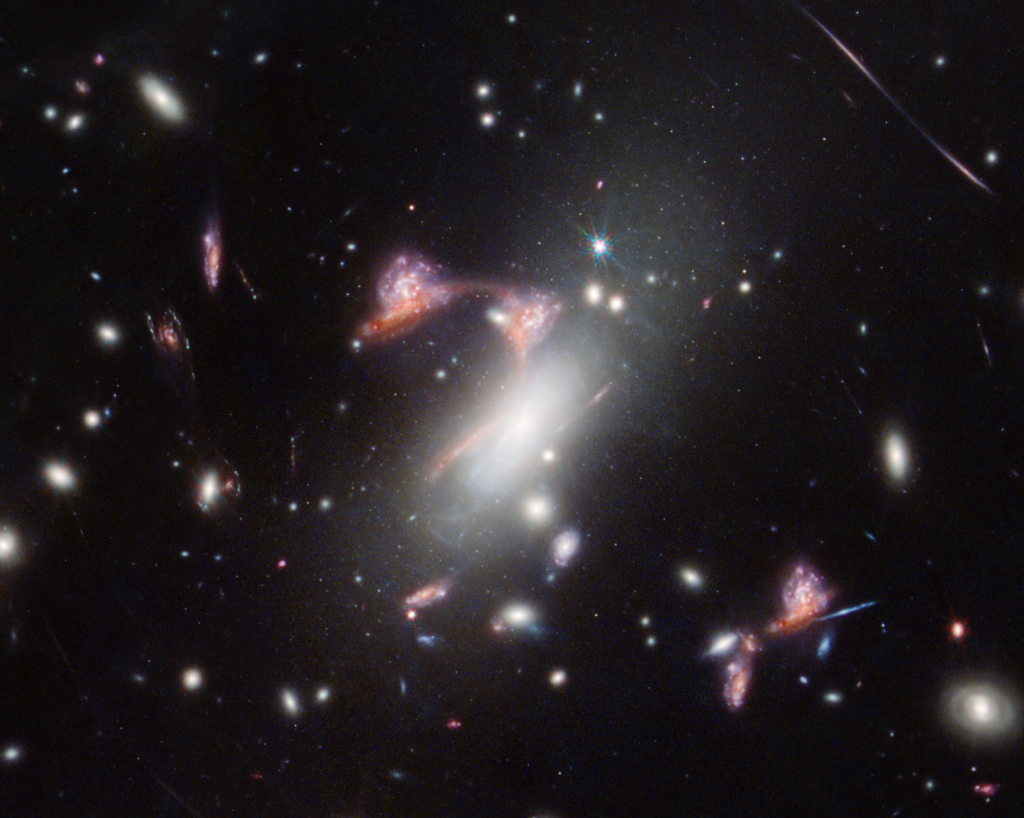
NASA’s Webb Reveals Distorted Galaxy Forming Cosmic Question Mark - NASA Science
It’s 7 billion years ago, and the universe’s heyday of star formation is beginning to slow. What might our Milky Way galaxy have looked like at that time? Astronomers using NASA’s James Webb Space Telescope have found clues in the form of a cosmic qu…science.nasa.gov

Webb Finds Early Galaxies Weren’t Too Big for Their Britches After All - NASA Science
It got called the crisis in cosmology. But now astronomers can explain some surprising recent discoveries.science.nasa.gov
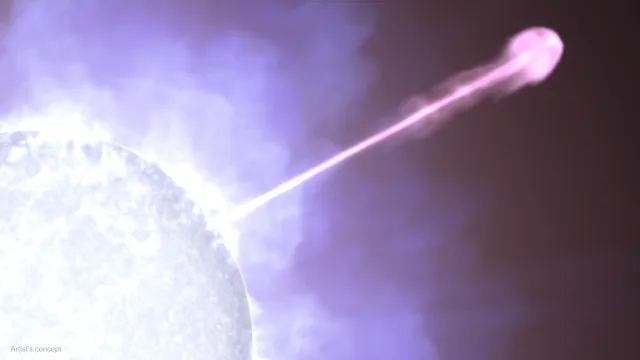
NASA’s Fermi Finds New Feature in Brightest Gamma-Ray Burst Yet Seen - NASA Science
In October 2022, astronomers were stunned by what was quickly dubbed the BOAT — the brightest-of-all-time gamma-ray burst (GRB).science.nasa.gov
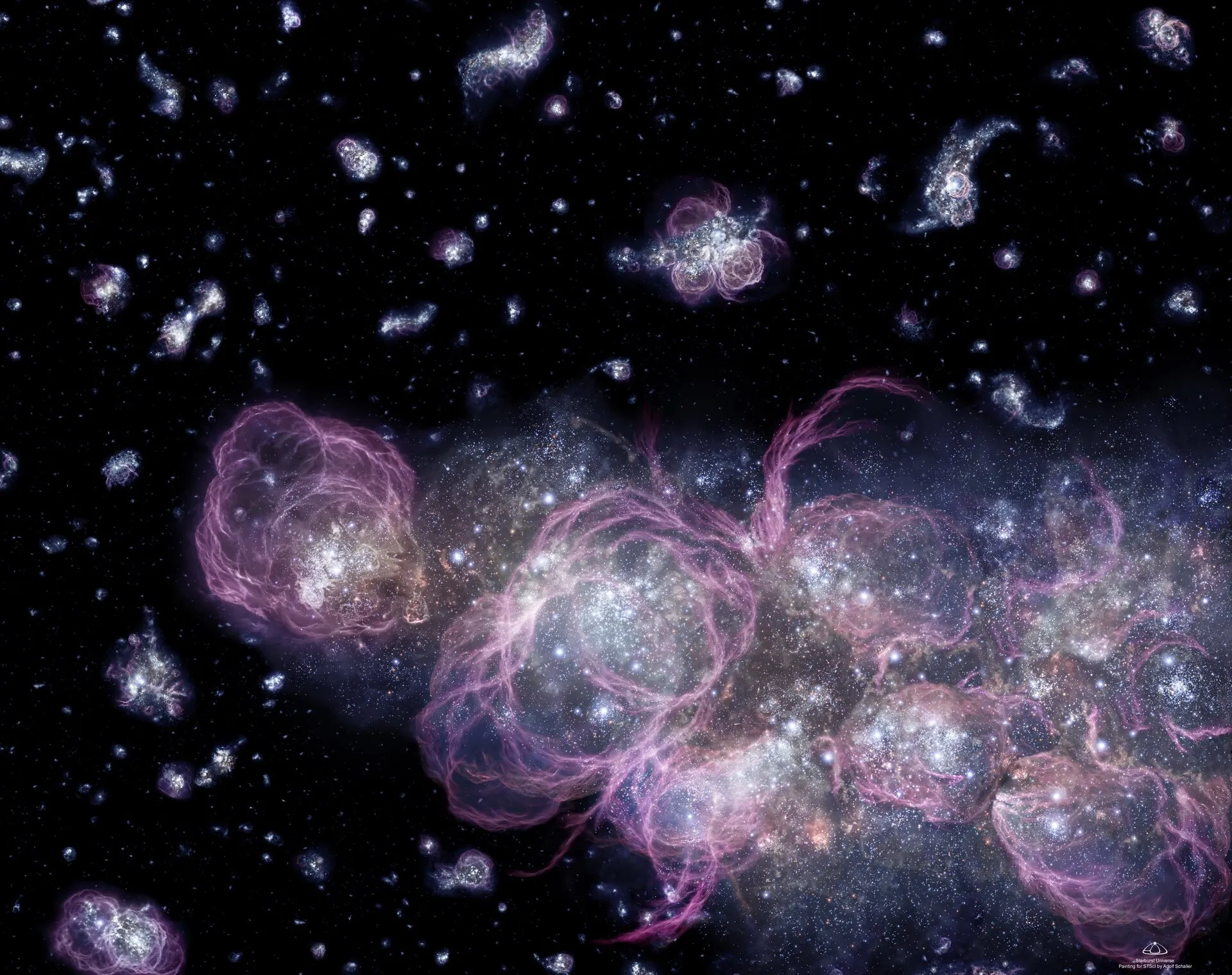
How NASA’s Roman Space Telescope Will Illuminate Cosmic Dawn - NASA
Today, enormous stretches of space are crystal clear, but that wasn’t always the case. During its infancy, the universe was filled with a “fog” that made itAshley Balzer (NASA)
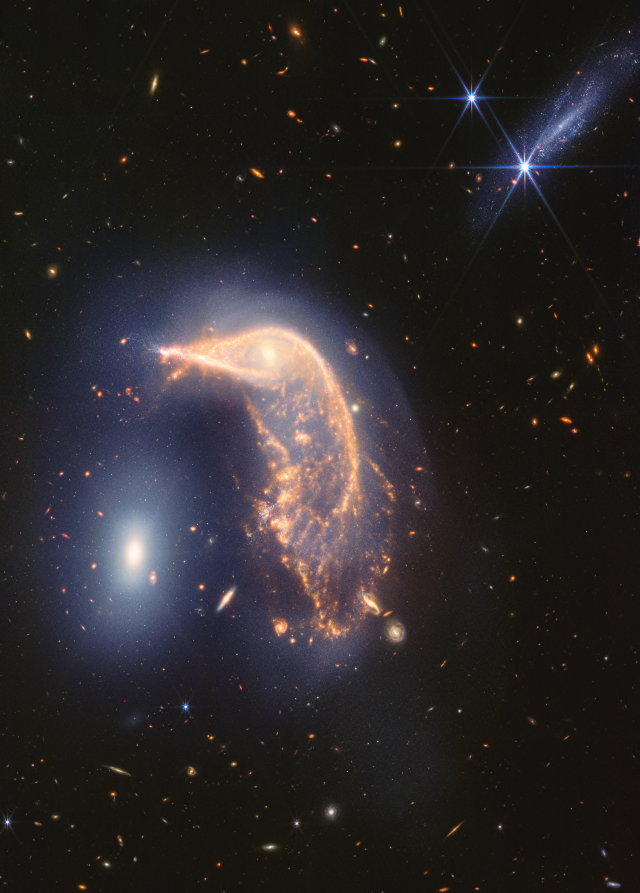
Vivid Portrait of Interacting Galaxies Marks Webb’s Second Anniversary - NASA Science
Two for two! A duo of interacting galaxies commemorates the second science anniversary of NASA’s James Webb Space Telescope, which takes constant observations, including images and highly detailed data known as spectra.science.nasa.gov
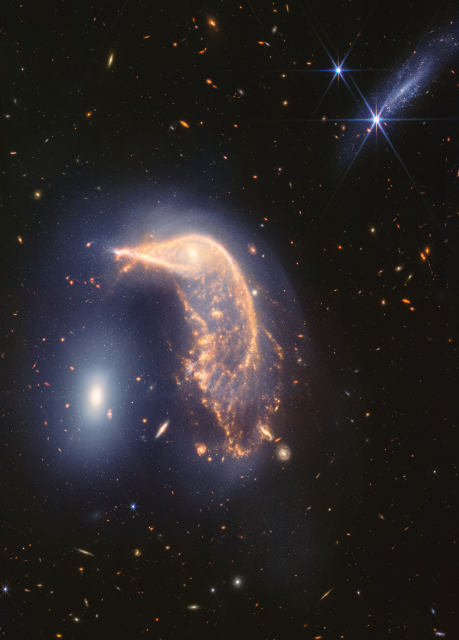
Two Years Since Webb’s First Images: Celebrating with the Penguin and the Egg - NASA
To celebrate the second science anniversary of NASA’s James Webb Space Telescope, the team has released a near- and mid-infrared image on July 12,NASA
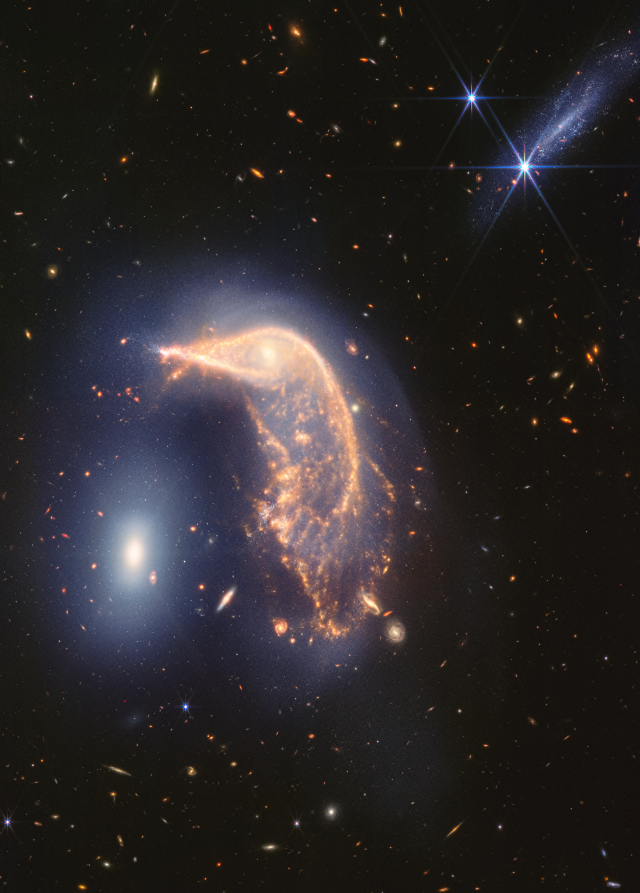
Vivid Portrait of Interacting Galaxies Marks Webb’s Second Anniversary - NASA Science
Two for two! A duo of interacting galaxies commemorates the second science anniversary of NASA’s James Webb Space Telescope, which takes constant observations, including images and highly detailed data known as spectra.science.nasa.gov
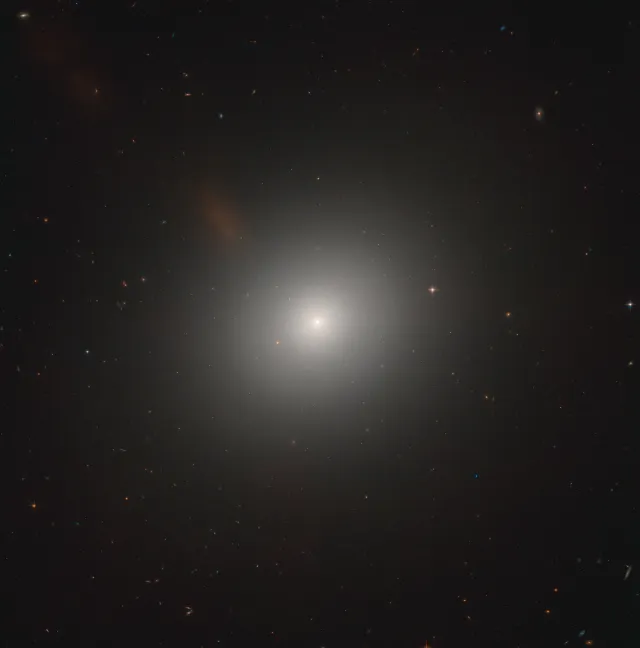
Hubble Examines an Active Galaxy Near the Lion’s Heart - NASA Science
It might appear featureless and unexciting at first glance, but NASA/ESA Hubble Space Telescope observations of this elliptical galaxy — known as Messier 105 — show that the stars near the galaxy’s center are moving very rapidly.science.nasa.gov
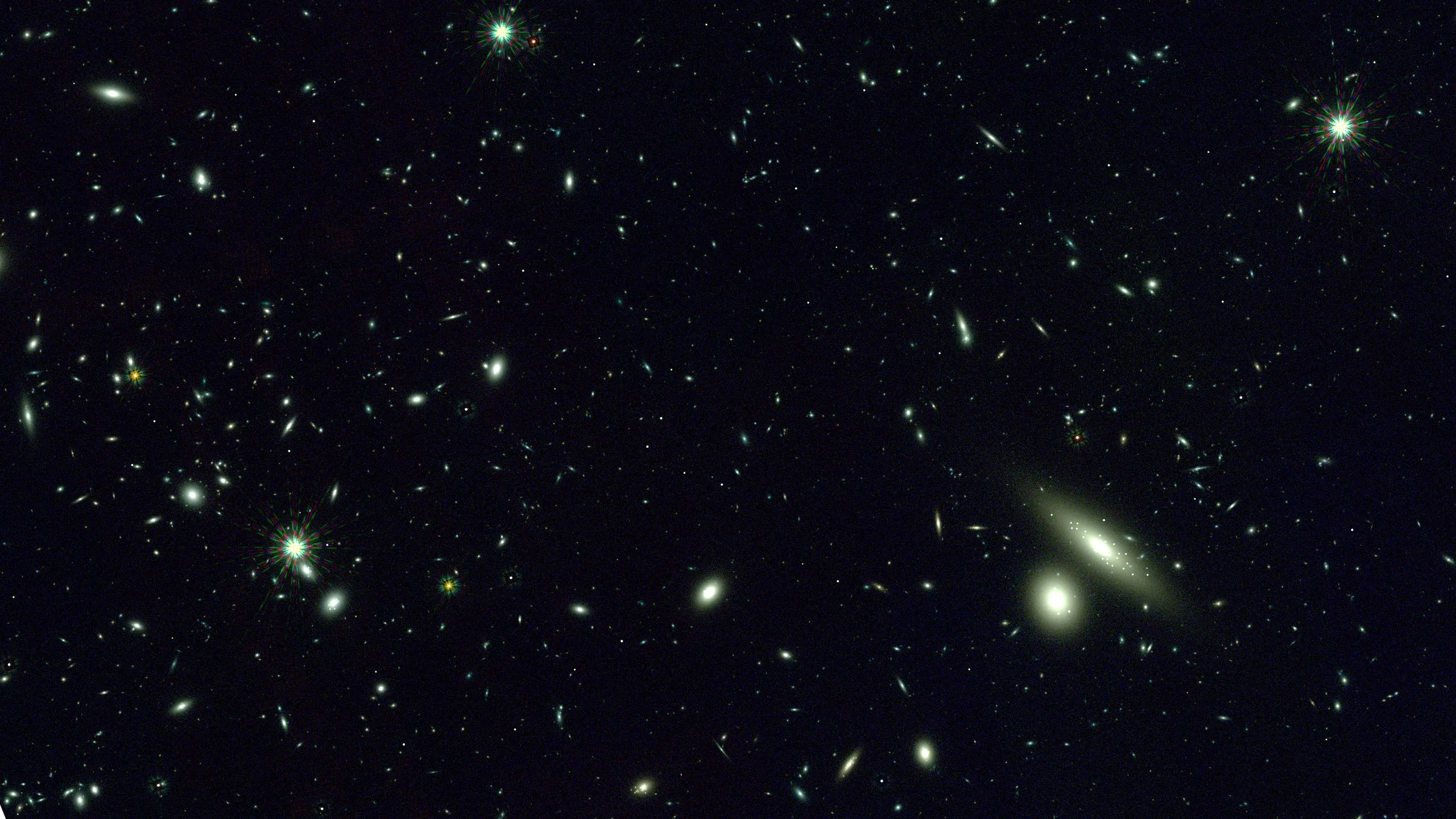
NASA’s Roman Mission Gets Cosmic ‘Sneak Peek’ From Supercomputers - NASA
Researchers are diving into a synthetic universe to help us better understand the real one. Using supercomputers at the U.S. DOE's (Department of Energy’s)Ashley Balzer (NASA)
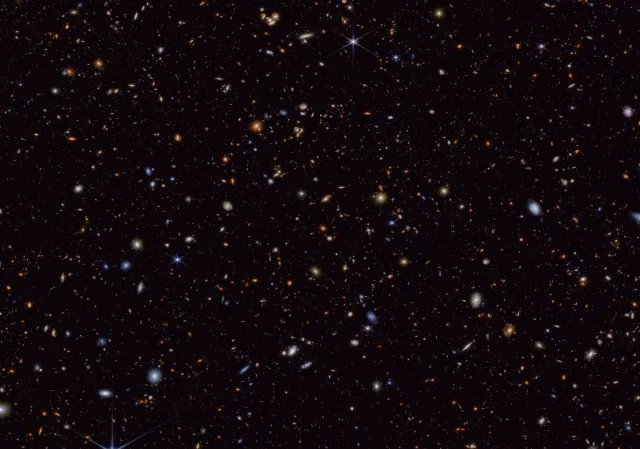
NASA’s Webb Opens New Window on Supernova Science - NASA Science
Peering deeply into the cosmos, NASA’s James Webb Space Telescope is giving scientists their first detailed glimpse of supernovae from a time when our universe was just a small fraction of its current age.science.nasa.gov
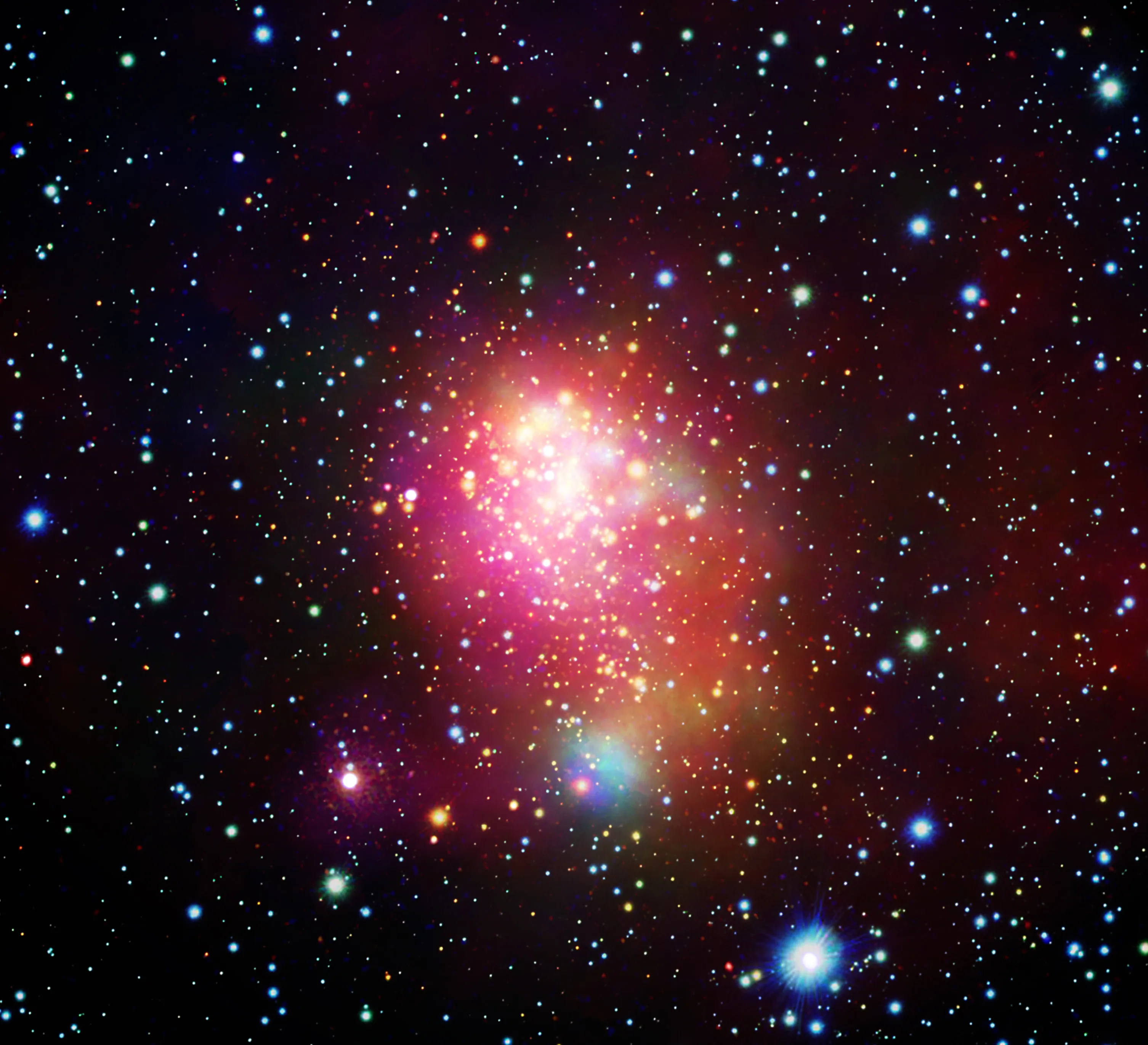
'Super' Star Cluster Shines in New Look From NASA's Chandra - NASA
Westerlund 1 is the biggest and closest “super” star cluster to Earth. New data from NASA’s Chandra X-ray Observatory, in combination withNASA
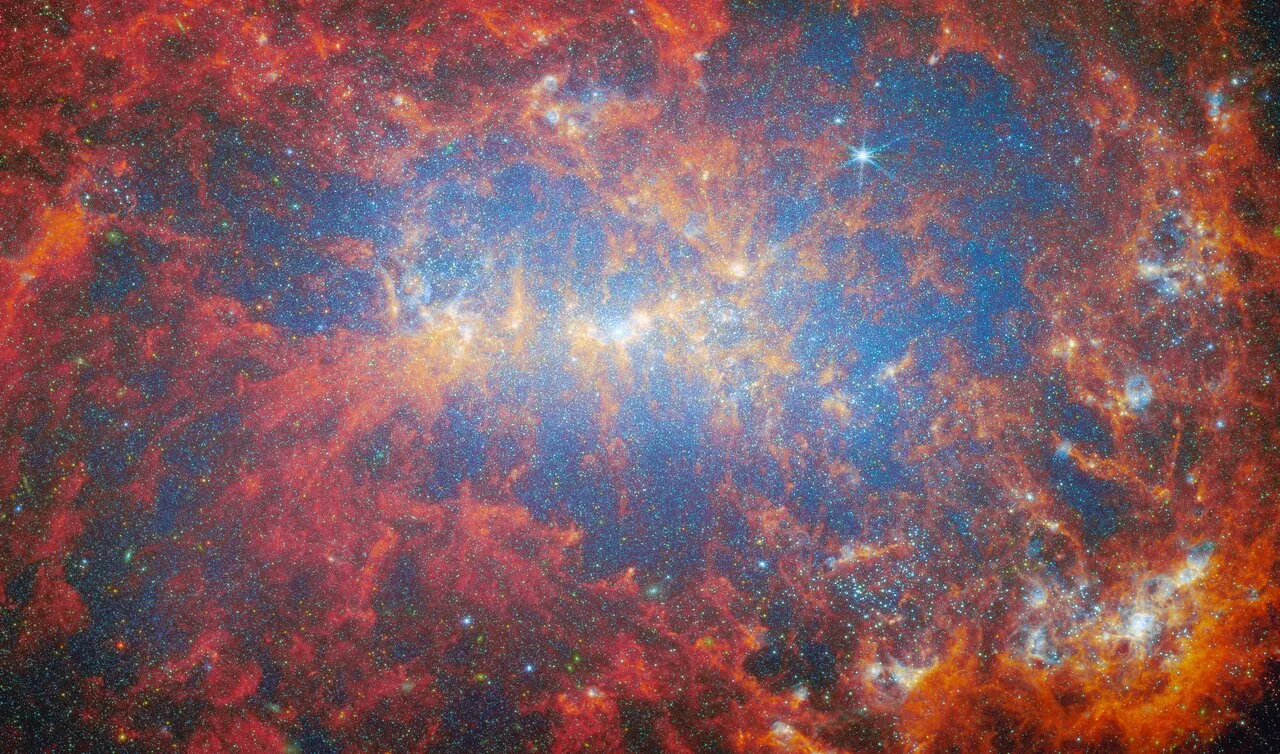
Webb Spots a Starburst - NASA
The James Webb Space Telescope observed “starburst” galaxy NGC 4449, seen in this image released on May 29, 2024. Starbursts are intense periods of starNASA
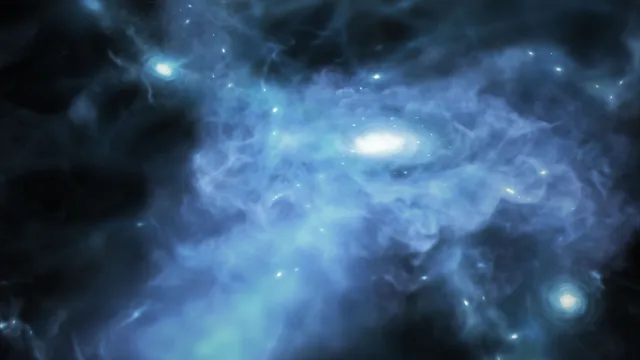
Galaxies Actively Forming in Early Universe Caught Feeding on Cold Gas - NASA Science
Researchers analyzing data from NASA’s James Webb Space Telescope have pinpointed three galaxies that may be actively forming when the universe was only 400 to 600 million years old.science.nasa.gov

Spotted: ‘Death Star’ Black Holes in Action - NASA
A team of astronomers have studied 16 supermassive black holes that are firing powerful beams into space, to track where these beams, or jets, areNASA
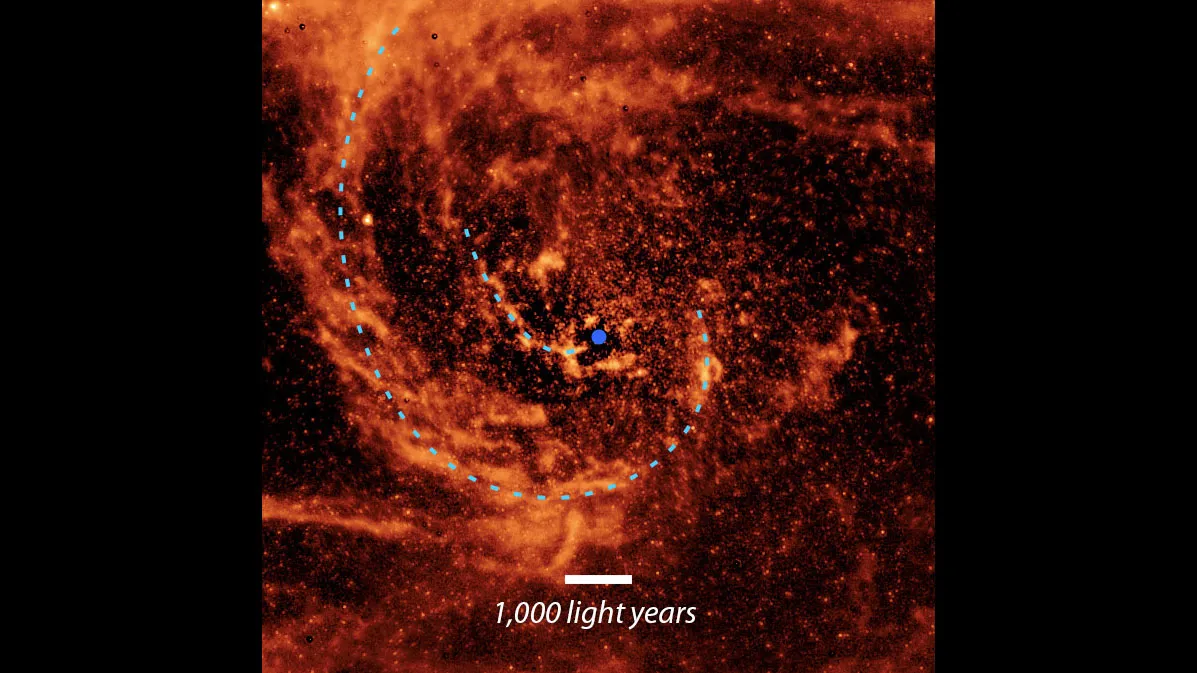
NASA Images Help Explain Eating Habits of Massive Black Hole - NASA
Data from NASA’s retired Spitzer Space Telescope has given scientists new insights into why some supermassive black holes shine differently than others.Anthony Greicius (NASA)
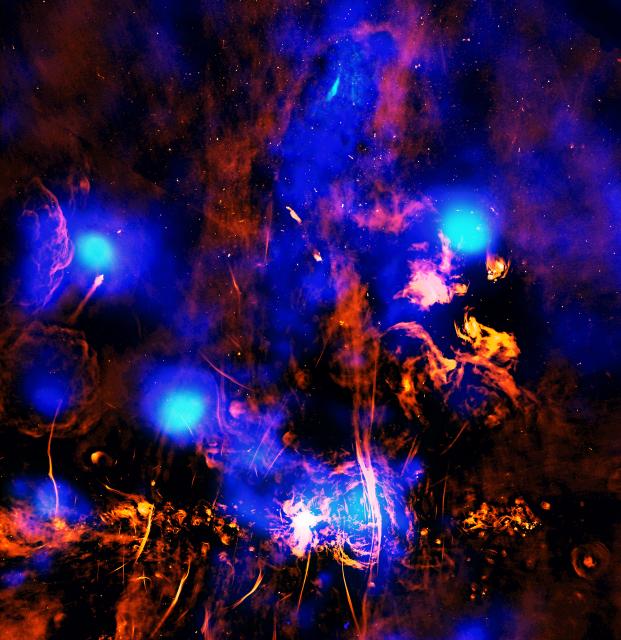
NASA's Chandra Notices the Galactic Center is Venting - NASA
Data from the Chandra X-ray Observatory reveal ridges thought to be a tunnel, that releases hot gas from the supermassive black hole at the Galactic Center.NASA
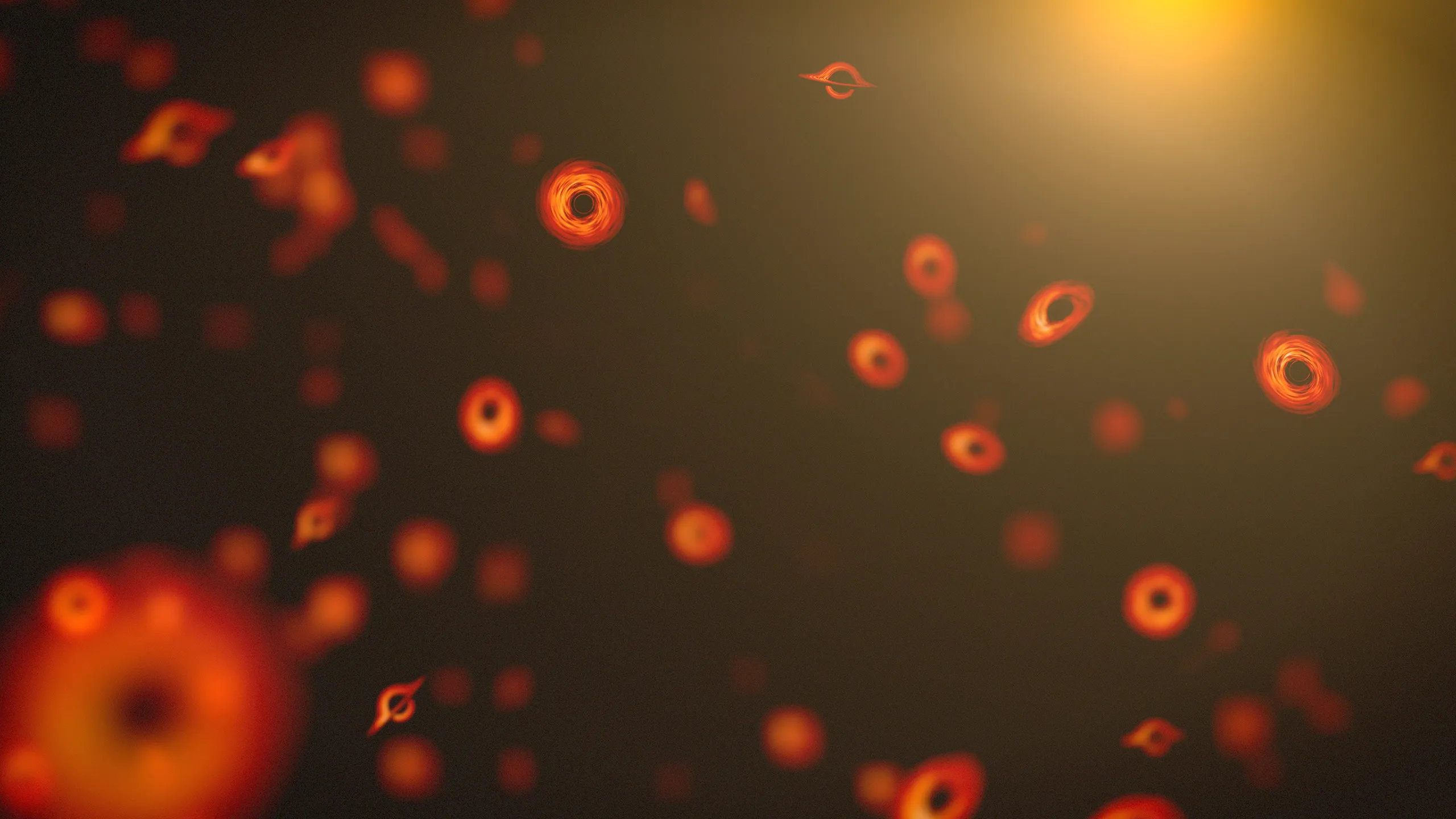
How NASA’s Roman Mission Will Hunt for Primordial Black Holes - NASA
Astronomers have discovered black holes ranging from a few times the Sun’s mass to tens of billions. Now a group of scientists has predicted that NASA’s NancyAshley Balzer (NASA)
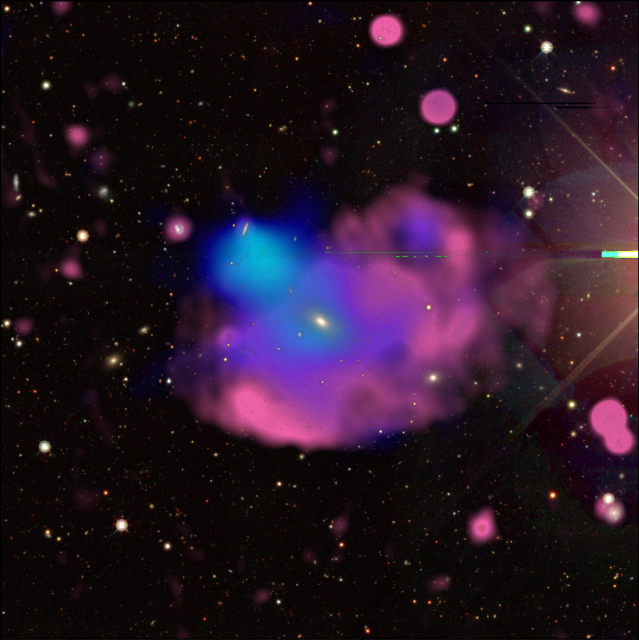
X-ray Satellite XMM-Newton Sees ‘Space Clover' in a New Light - NASA
Astronomers have discovered enormous circular radio features of unknown origin around some galaxies. Now, new observations of one dubbed the CloverleafAshley Balzer (NASA)
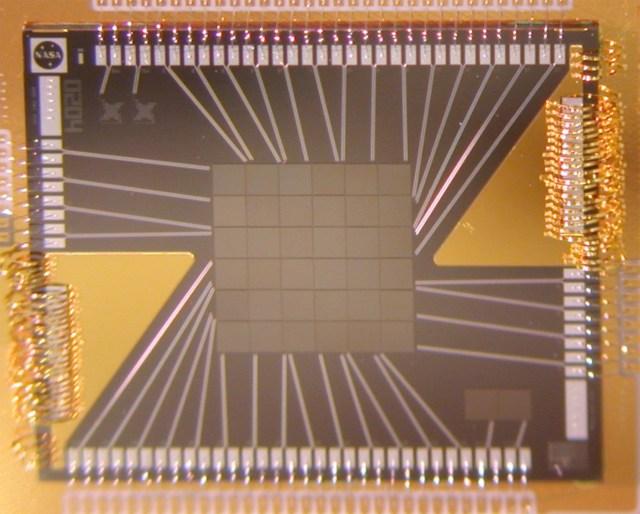
NASA/JAXA’s XRISM Mission Captures Unmatched Data With Just 36 Pixels - NASA Science
At a time when phone cameras are capable of taking snapshots with millions of pixels, an instrument on the Japan-led XRISM (X-ray Imaging and Spectroscopy Mission) satellite captures revolutionary science with just 36 of them.science.nasa.gov
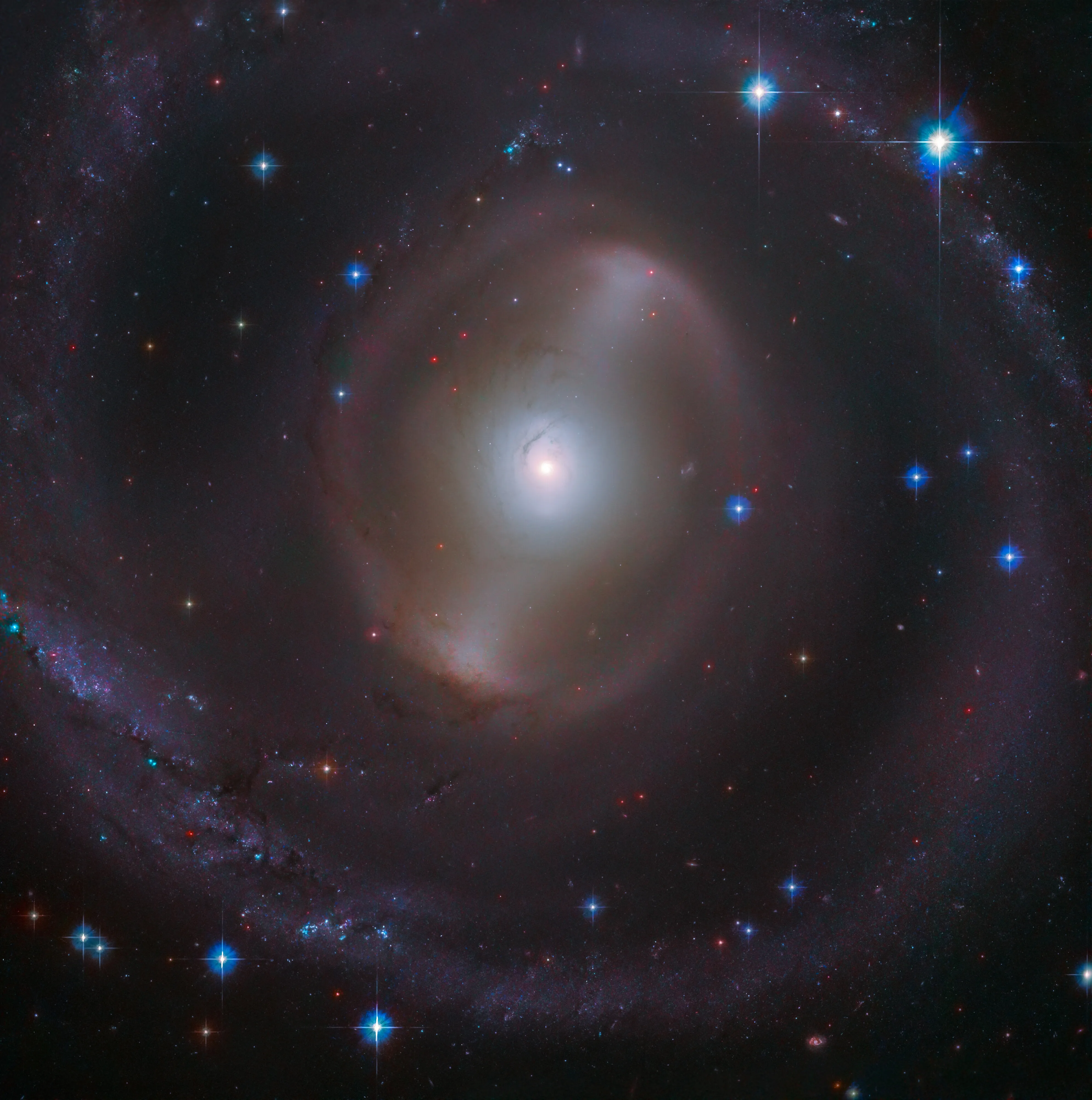
Hubble Spots a Magnificent Barred Galaxy - NASA
The magnificent central bar of NGC 2217 (also known as AM 0619-271) shines bright in the constellation of Canis Major (The Greater Dog), in thisNASA
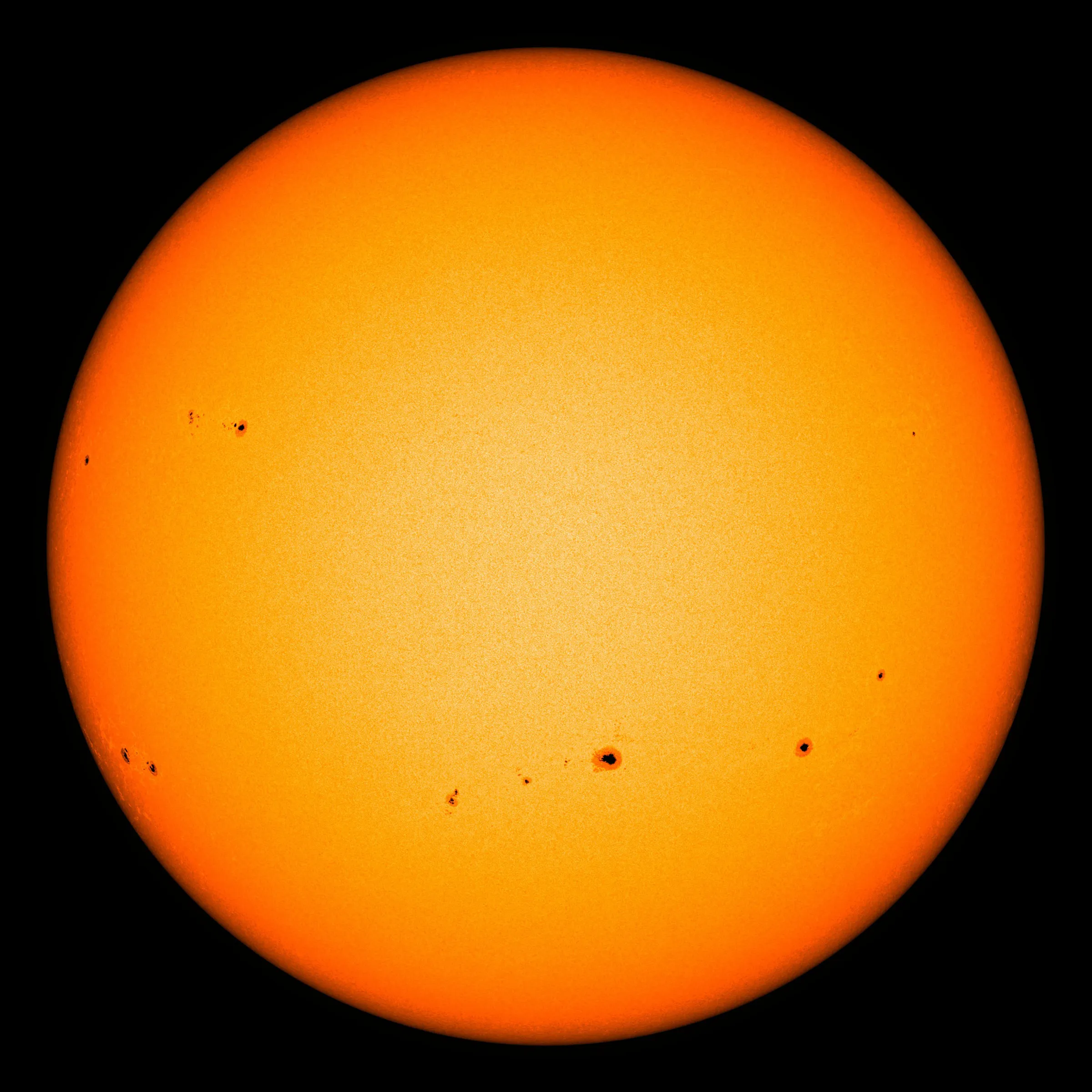
How NASA's Roman Telescope Will Measure Ages of Stars - NASA
Guessing your age might be a popular carnival game, but for astronomers it’s a real challenge to determine the ages of stars. Once a star like our Sun hasAshley Balzer (NASA)
